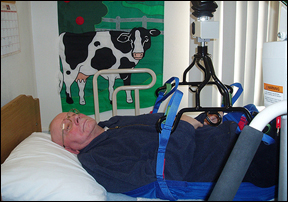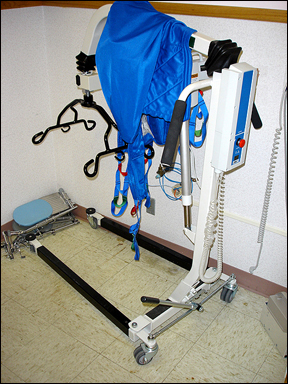Best practices -- Full-assist mechanical lifts
Health care industry
Full-assist mechanical lifts reduce injuries when lifting, moving nursing-home residents
Care providers in a nursing home were required to lift and transfer residents as part of the daily care provided. When done manually, the lifting was a known contributor to back injuries among the nursing staff as a result of the excessive force, awkward positioning and frequency of performing a high-risk lift.
Use of mechanical floor lifts has greatly minimized the amount of manual effort required to lift a resident, particularly when the resident can no longer offer assistance during the lift. The use has reduced exposure to the known injury risk factors of excessive force and awkward posture, contributing to a year-to-date 100 percent decrease in nursing-related injuries. Having an adequate number of lifts available has reduced the time spent waiting for a lift to be available, further promoting the use of safe work practices when lifting residents. The care staff no longer feels the need to perform high-risk manual lifts, when mechanical lifts are available to assist them.
Since the use of mechanical lifts has reduced the forceful lifting requirements typically associated with manual lifting of residents, the number of back injury occurrences among the nursing staff has also decreased significantly. The care staff also feels residents are at a lower risk of injury when mechanical lifts are used.
|
A mechanical lift and sling is used to lift residents who have limited mobility. A built-in scale greatly reduces the amount of handling required when weighing a resident, by eliminating the need to transfer the resident to a wheelchair or shower chair, prior to weighing. It also provides a more accurate weight of the resident. |
|
Disclaimer: Photographs of commercially available products posted on this site are for reference purposes only and do not imply any endorsement by the Minnesota Department of Labor and Industry. The best-practices ideas have been reviewed and posted solely at the discretion of the department and should only be considered as possible examples for reducing risk factors, based on existing ergonomics guidelines. Employers and employees need to work together to identify and control ergonomics risk factors within the workplace to better ensure changes made to a work process will be effective in reducing risk factors and maintaining work efficiency.



